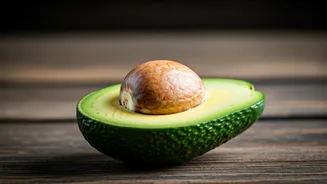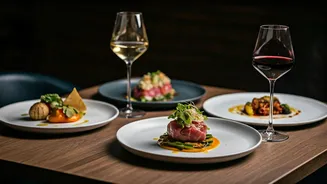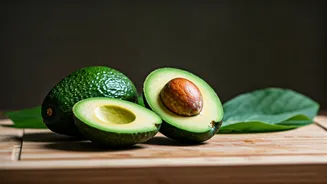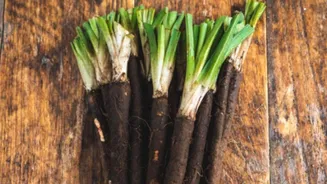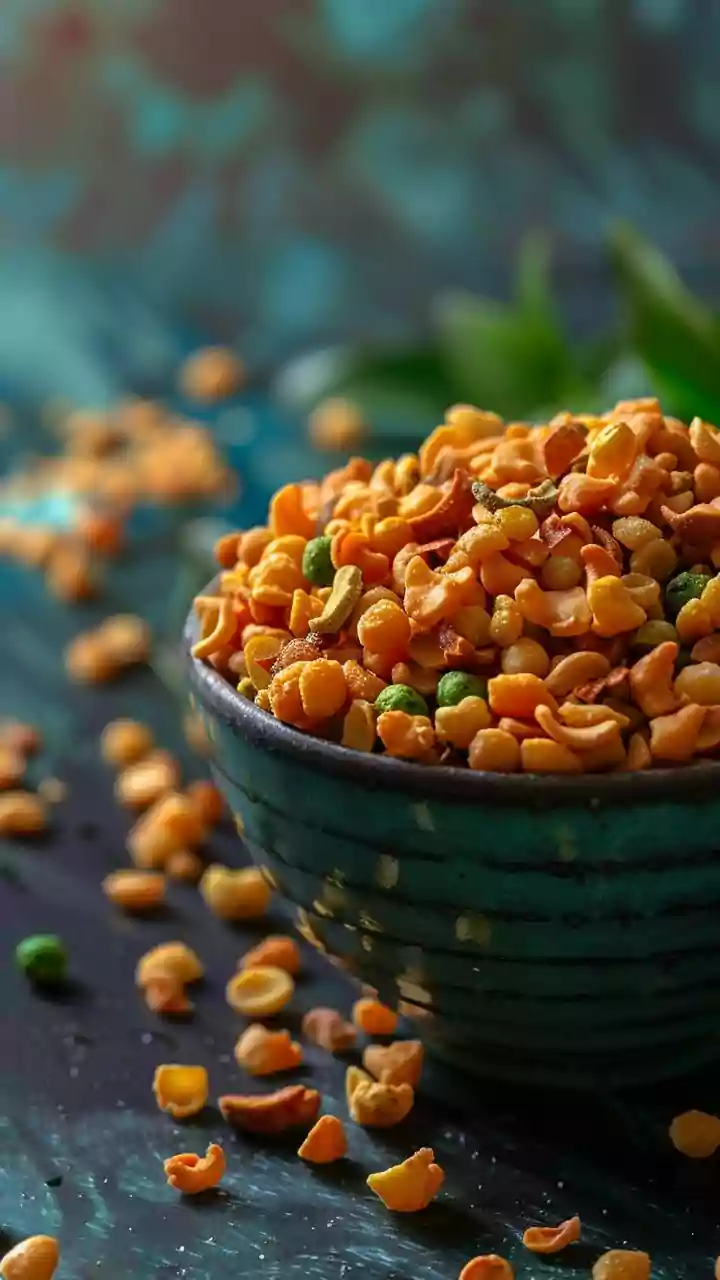Inspect the Skin
The skin of an avocado is like a roadmap to its ripeness. The color of the skin provides initial clues about the fruit's stage. Generally, the darker the skin,
the riper the avocado is likely to be. However, this is not a universal rule because the skin color varies across different avocado varieties. For instance, Hass avocados turn a dark green or even purplish-black when ripe. Other varieties may remain green. It's important to know the typical skin color for the specific type of avocado. The skin’s texture also tells a tale. Avoid avocados with dents, bruises, or deep cuts, as these are signs of damage. Even a small bruise can accelerate spoilage. Additionally, if the skin appears shriveled or wrinkled, the avocado might be past its prime. Also look for any signs of mold, which clearly indicates that the avocado has already started to spoil.
The Stem Test
The stem, or the small nub at the top of the avocado, provides another key indicator of its ripeness. Gently flick away the stem. If it comes off easily, the avocado is likely ready to eat. If the area under the stem is green, the avocado is in prime condition. A green stem is a great sign that the fruit is perfectly ripe. On the other hand, if the stem is difficult to remove, the avocado might not be ready yet. Conversely, if the stem comes off easily and reveals a brown or dark color underneath, the avocado may be overripe. This area darkens as the avocado starts to decay. This can be a sign that the avocado is already starting to rot from the inside, so it's best to avoid it.
Gentle Pressure
The 'squeeze test' is often used to assess ripeness, but be gentle. Applying too much force can bruise the avocado. Hold the avocado in your palm and gently squeeze it. A ripe avocado should yield to gentle pressure. It should feel somewhat soft, but not mushy. If the avocado feels firm and unyielding, it's not ripe yet, and you'll need to wait a few days before consuming. If the avocado feels extremely soft or mushy, it is likely overripe. Overripe avocados may have brown spots inside and a less desirable texture. Aim for the sweet spot: a slight give, indicating perfect ripeness.
Consider Variety
Different avocado varieties have distinct characteristics. Knowing the variety you are buying will help you determine the best indicators of ripeness. Hass avocados, the most common type, will turn dark green or purplish-black when ripe. They tend to have a slightly rougher skin. Other varieties may remain green, even when ripe. For example, the Florida avocado stays green even when it's at its best. Their skin is typically smoother. Understanding the variety allows for a more accurate evaluation, since the color and texture can vary greatly. Paying attention to these differences ensures a better shopping experience. When buying different varieties, research their specific traits.
Storage Solutions
Proper storage can extend the life of your avocados. If your avocado is not ripe, you can store it at room temperature. This will help the ripening process. Once ripe, you can place your avocado in the refrigerator to slow down its ripening. This can help extend its shelf life by several days. If you only use part of an avocado, keep the remaining portion fresh. Brush the exposed flesh with lemon or lime juice to prevent browning. Wrap the avocado tightly with plastic wrap or place it in an airtight container. This will minimize air exposure. These simple steps can help you savor your avocados for longer periods, preventing waste and ensuring enjoyment.
